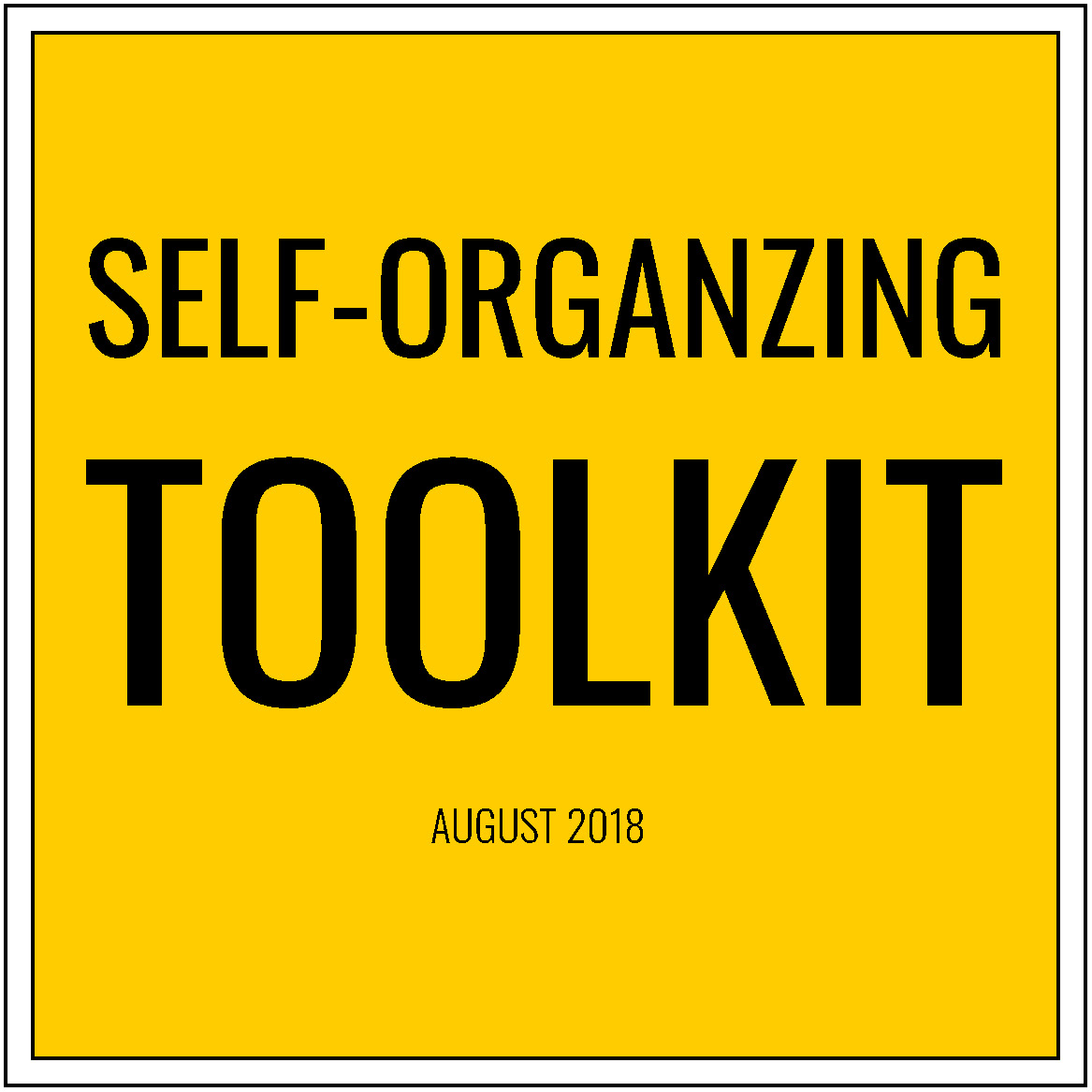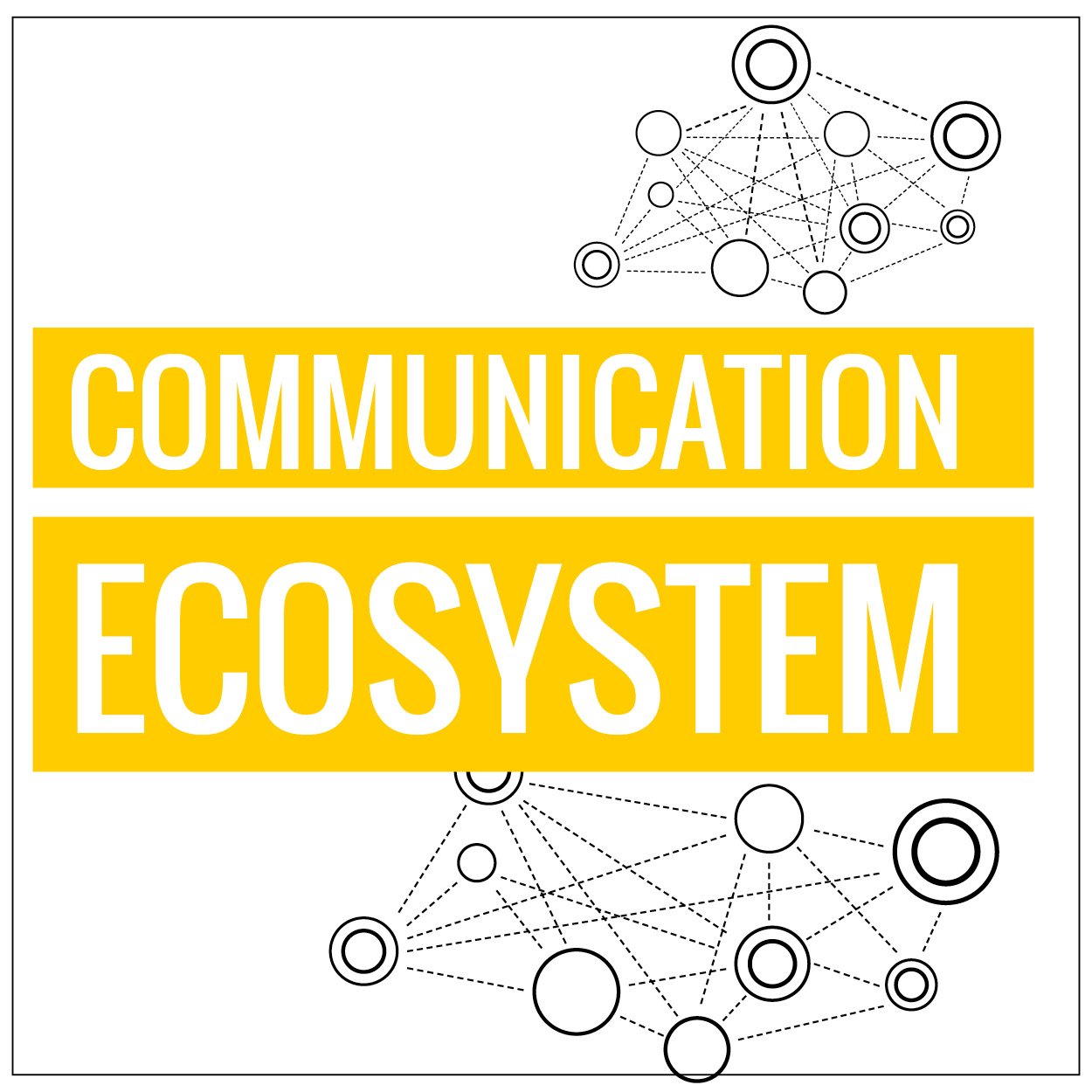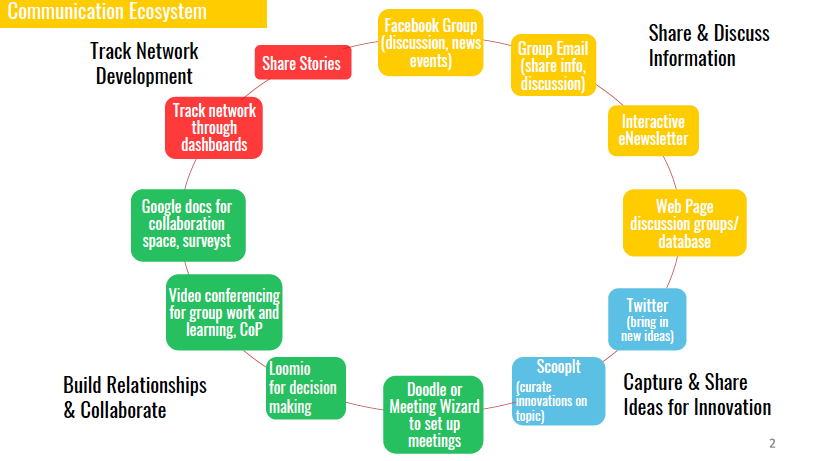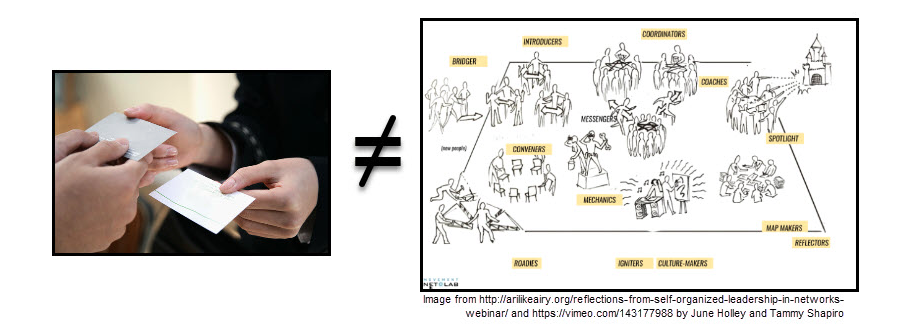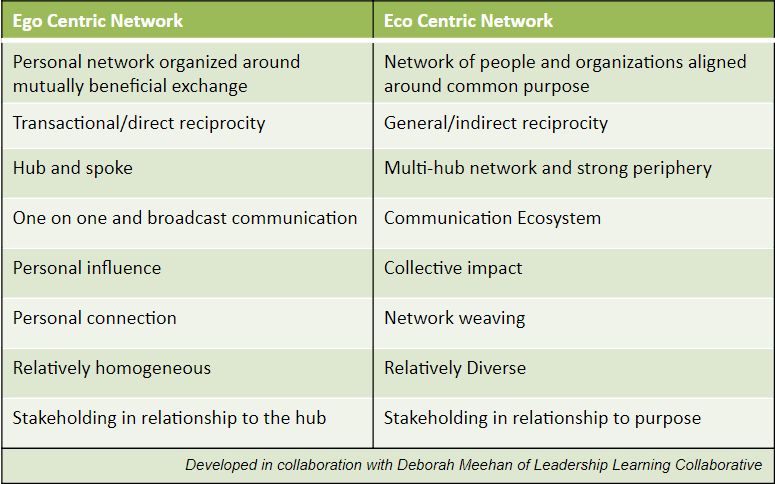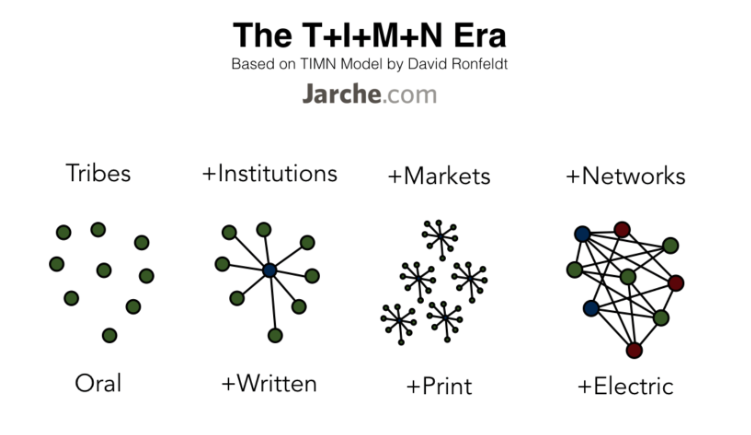Why Dismantling Racism and White Supremacy Culture Unleashes the Benefits of Networks
Before we go any further down the road of this blog, we need to point out that network approaches cannot become transformative unless the network explicitly works on dismantling white supremacy culture and racism.
This is because networks only flourish when people in them are able to interact as peers, valuing everyone’s input and involvement. In addition, many aspects of dominant or white supremacy culture hold us back from reaping the benefits of networks, but are so pervasive as to be hidden from our awareness. Tema Okun has one of the best lists of these cultural characteristics which include (the next two sections are quoted verbatim from her article):[ap_spacing spacing_height="15px"]
1. Perfectionism
- Little appreciation expressed among people for the work that others are doing; appreciation that is expressed usually directed to those who get most of the credit anyway[ap_spacing spacing_height="15px"]
- more common is to point out either how the person or work is inadequate - or even more common, to talk to others about the inadequacies of a person or their work without ever talking directly to them[ap_spacing spacing_height="15px"]
- mistakes are seen as personal, i.e. they reflect badly on the person making them as opposed to being seen for what they are – mistakes[ap_spacing spacing_height="15px"]
- making a mistake is confused with being a mistake, doing wrong with being wrong[ap_spacing spacing_height="15px"]
- little time, energy, or money put into reflection or identifying lessons learned that can improve practice, in other words little or no learning from mistakes[ap_spacing spacing_height="15px"]
- tendency to identify what’s wrong; little ability to identify, name, and appreciate what’s right[ap_spacing spacing_height="15px"]
- often internally felt, in other words the perfectionist fails to appreciate her own good work, more often pointing out his faults or ‘failures,’ focusing on inadequacies and mistakes rather than learning from them; the person works with a harsh and constant inner critic
[ap_spacing spacing_height="20px"]
2. Sense of Urgency
- continued sense of urgency that makes it difficult to take time to be inclusive, encourage democratic and/or thoughtful decision-making, to think long-term, to consider consequences[ap_spacing spacing_height="15px"]
- frequently results in sacrificing potential allies for quick or highly visible results, for example sacrificing interests of communities of color in order to win victories for white people (seen as default or norm community)[ap_spacing spacing_height="15px"]
- reinforced by funding proposals which promise too much work for too little money and by funders who expect too much for too little[ap_spacing spacing_height="15px"]
Others are: defensiveness, quantity over quality, worship of the written word, only one right way, paternalism, "either/or" thinking, power hoarding, fear of open conflict, individualism, "I’m the only one", objectivity, and right to comfort.
Please read the entire article here.
As Tema points out,
“[Organizations] who unconsciously use these characteristics as their norms and standards make it difficult, if not impossible, to open the door to other cultural norms and standards. As a result, many of our organizations, while saying we want to be multi-cultural, really only allow other people and cultures to come in if they adapt or conform to already existing cultural norms. Being able to identify and name the cultural norms and standards you want is a first step to making room for a truly multi-cultural organization.” [ap_spacing spacing_height="15px"]
Please share experiences you have had or how your organization or network is working to dismantle racism and dominant culture.
Self-Organizing Toolkit
A new free resource is available in the Resources section of Network Weaver.
The self-organizing toolkit includes a set of simple actions that you can take to jump start self-organizing in your organization or network.
It includes a clustering activity for meetings to help people find others interested in the same or similar activities and surveys that can be used to help people cluster. In addition, it detailed the three roles that you can take to support self-organizing by being a project coach, setting up a communications system, and setting up a community of practice for projects.
The toolkit also includes sample google docs and spreadsheets that you can use so that projects can stay on track. Finally, the toolkit discusses how to set up an Innovation or Seed Fund to provide financial incentives to self-organized projects.
The Promise of Co-Design
[ap_spacing spacing_height="20px"]Co-Design Series Part 2[ap_spacing spacing_height="28px"]
THE WHY[ap_spacing spacing_height="15px"]
Co-design is a process that guides a group of people through various iterations of coming together to create something. This something might be a product, an activity, a project or a service. In fact, much of what is happening in networks is collaborative invention rather than traditional decision-making. Most decision-making in networks is done in collaborative projects as they are experimenting and creating something new. [ap_spacing spacing_height="15px"]
Co-Design Is [ap_spacing spacing_height="15px"]
- POWERFUL. Co-design is a way of working together that assumes we all have something to contribute. The process distributes power to participants, utilizing each individual’s unique perspectives, expertise, and skills to create something new. [ap_spacing spacing_height="15px"]
- COLLABORATIVE. Co-design employs processes that bring together many perspectives and capacity levels of participants. The processes are flexible, encourage collaboration, and incorporate reflection, and can change over time as the group’s goals change and adapt.[ap_spacing spacing_height="15px"]
- TRANSFORMATIVE. Co-design and the culture change it requires can help us toward our bigger goals of social transformation, as we create new ways of engaging with each other and our own communities.
[ap_spacing spacing_height="25px"]
THE WHAT[ap_spacing spacing_height="15px"]
To get a deeper sense of what co-design is, here are three definitions:
The co-design approach enables a wide range of people to make a creative contribution in the formulation and solution of a problem. … Facilitators provide ways for people to engage with each other as well as providing ways to communicate, be creative, share insights and test out new ideas. John Chisholm -- Senior Research Associate, Design Management, Lancaster University.
[ap_spacing spacing_height="10px"]
Participatory Design (PD) refers to the activity of designers and people not trained in design working together in the design and development process. In the practice of PD, the people who are being served by design are no longer seen simply as users, consumers or customers. Instead, they are seen as the experts in understanding their own ways of living and working. Elizabeth B–N. Sanders
[ap_spacing spacing_height="10px"]
Our definition: Co-design is a participatory, reflective, and adaptive process used to design and create. By centering participants as experts, it decentralizes decision-making and power, facilitating the transformative power of small groups.
[ap_spacing spacing_height="30px"]
THE HOW[ap_spacing spacing_height="15px"]
When utilizing co-design as a process, we are guided by the following principles as distinguished from conventional design processes:
[ap_spacing spacing_height="15px"]
Guiding Principles |
|
Conventional design |
Co-design |
Decision-making power |
|
| One person or a small group makes the majority of strategic decisions | Many people are engaged at many levels of a hierarchy (or across a network) in strategic decision-making |
Leadership and experts |
|
| A top-down, expert-led approach is utilized which offers limited opportunities for collaboration | Co-design honors participants as the true experts in their fields, creating many opportunities for collaboration throughout the design process |
Structure |
|
| Rigid structures (eg. a strategic plan) are used that lock the work and/or process in place after a decision is made | Co-design utilizes flexible formations that allow both the content of the work and the process to change over time |
Flexible engagement |
|
| Creates systems that maintain individuals at consistent levels of engagement with the work; individuals tend to be highly involved in design or not at all | Allows for individuals to participate at varying levels that may change over time; for example an individual may participate in the design group weekly, join monthly steering committee calls, or give feedback once in awhile |
Reflection, learning, and adaptation |
|
| Lacks reflection points or reflection is not used to inform growth and adaptation of the work | Reflection is a built-in, frequent process used to adapt strategies and priorities over the lifespan of the project |
Cultural shift |
|
| Promotes a dominant culture that disregards or actively excludes some voices and perspectives | Co-design opens us to new ways of working together by establishing a process that allows multiple individuals to take ownership and step into leadership roles |
Product versus process |
|
| Focuses on the end product and how individuals might interact with it | Co-design centers process (rather than end product) as a way to engage and continue engaging |
[ap_spacing spacing_height="25px"]
IN SUM[ap_spacing spacing_height="15px"]
Conventional design, decision-making, and creation processes focus power in one individual or a small group, creating a system that is less conducive to innovation and hinders emergence of new leaders.
[ap_spacing spacing_height="10px"]
We believe the process of co-design shifts these power dynamics, empowering participants to have ownership over the process and product. Because of this, we believe co-design can help networks respond to emergence, become more innovative, and foster transformation at both the individual and network level.
[ap_spacing spacing_height="10px"]
Almost every aspect of network action, operations and governance can benefit by using co-design processes. For example, when people are self-organizing collaborative projects, they can co-design what they are doing. When a network is articulating its purpose, it can do so through a co-design process asking network participants to work in small groups to generate what they would like to see in the purpose statement. When networks are planning a convening, they can do like Leadership Learning Community (LLC) has done and invite anyone who wants to be part of virtual sessions to co-design the gathering.
[ap_spacing spacing_height="10px"]
Inherent in co-design is the idea that all individuals have perspective, experience, and expertise to bring to the table. This means we’d also love to hear your perspective on co-design! Have you seen co-design techniques used in your network? How could you envision co-design supporting your small group?
[ap_spacing spacing_height="25px"]
Read Part 1 of the Co-Design Series HERE
What Is Self Organizing?
Self-organizing is perhaps the most important and least understood aspect of System Shifting Networks.
There are many scientific definitions of self-organizing but they are hard to wade through. After 20 years of helping networks self-organize, I’ve created a definition that is very concrete and practical for getting started with self-organizing.[ap_spacing spacing_height="10px"]
Self-organizing happens when any individual or group...[ap_spacing spacing_height="15px"]
- sees an opportunity to make a change or try something out (idea or opportunity isn’t dictated by anyone else)[ap_spacing spacing_height="20px"]
- feels like they can initiate action (self-generated idea and action)[ap_spacing spacing_height="20px"]
- finds diverse others from a large network to join with them or collaborate (those who work on the project aren’t dictated by anyone else, people self-select to participate)[ap_spacing spacing_height="20px"]
- experiments with small actions[ap_spacing spacing_height="20px"]
- accesses the (usually small) resources they need to act[ap_spacing spacing_height="20px"]
- spends a lot of time paying attention to what is happening, debriefing, learning from the experience, and analyzing what they did -- all to enable them to take a better next step[ap_spacing spacing_height="20px"]
- shares what is learned with the larger network [ap_spacing spacing_height="25px"]
A self-organized project has an end - when it ends, all the participants can decide if they want to work with others on their next project or not.
Self-organizing becomes transformative when there are thousands of such projects in a network, and each individual is involved in a number of projects, so that innovations and new ways of looking at problems spread rapidly throughout the network, enabling each new project to be more effective. The spread of the use of zoom.us videoconferencing platform by networks over the last two years is an example of how innovations can spread from project to project virally.
Self-organizing is based on the assumption that we don’t know how to solve most of the problems we are trying to solve. Self-organized projects probe the problem, helping us learn more about it and how to best shift the system that is generating the problem.
Another transformative aspect of self-organizing occurs when participants in self-organized projects come together in communities of practice to share what they have learned from their project, support each other with challenges, and discuss how they can apply what they have learned to future projects. When this is shared with the larger network everyone can benefit.
Here is an excellent video of Tamara Shapiro of Movement Netlab on a Leadership Learning Community (LLC) webinar on Self-organizing in Occupy Sandy. Highly recommended!
Friday, Network Weaver will be posting the Self-organizing Toolkit, which you will be able to download for free in the resources section.
In the coming weeks we will outline the simple steps you can take to jumpstart self-organizing in your network.
How have you experimented with self-organizing in your networks? Please share in the comments section below.
June Holley
Communication Ecosystem
A new downloadable free item is up on the Network Weaver Resources page.[ap_spacing spacing_height="20px"]
One of the most critical support structures for networks is a well-thought out communications ecosystem - a set of tools and platforms that enable everyone in the network to connect and collaborate directly with anyone else in the network.
This kind of communication system is quite different from the broadcast strategy of many organizations, where the organization sends out information via a newsletter and/or website but has no avenues for people to respond or build connections to each other.
A communication system that supports interaction among network participants needs to fill four functions:
- Provide spaces and places for discussing ideas and for sharing what has been learned. [ap_spacing spacing_height="15px"]
- Ensure that everyone has access to new ideas and innovations from other communities and networks.[ap_spacing spacing_height="15px"]
- Many places for network participants to get to know each other and deepen relationships, and to work together collaboratively.[ap_spacing spacing_height="15px"]
- Ways to track network development (network leadership, network values, collaboration and collaborative skills, stages of network development, development of network support structures, network stories, etc) and use this data to enable the network to move more rapidly to a system shifting networks. [ap_spacing spacing_height="15px"]
[ap_spacing spacing_height="15px"]You can use the free handout in the Resources section to engage participants in your network in a process to help co-design your network's communication ecosystem. Share the handout with any network participants who are interested and begin to fill out the page with blank boxes
NENAD MALJKOVIC
CLICK HERE to download Communication Ecosystem handout.
Three Ways To Foster Education On Complexity Using Network Visualizations
There should be more focus on systems thinking in education, Roland Kupers argues convincingly in the Global Search for Education on the Huffington Post. As complexity always involves interconnectedness between components, I find network visualization particularly useful in my educational practice.
- It creates systemic awareness, because users are forced to think about interrelationships: linear versus non-linear relations; coping with uncertainty; etc.
- It counterbalances the urge to automatically take the reductionistic approach to problems and issues. In other words: next to analysis –quite literally: taking apart to study the components- it makes room for synthesis –zooming out to the constellation on the system level.
- It provides a kickstart for introducing key concepts in a non-technical way.
- It fosters dialogue between students, pupils or stakeholders.
Here, I provide three ways I find promising to explore further.
[ap_spacing spacing_height="20px"]1. Promote Network Literacy in primary, secondary and tertiary education simultaneously
I am grateful to the NetSciEd-initiative for having coined the term Network Literacy, to promote the use of network science concepts in primary and secondary education. This could involve the creation of conceptual network visuals, drawn by hand. It could also entail creating more formal networks made with datasets and software.
I am convinced this is an excellent way to build on young people’s innate capacities of exploration, wonder, creativity and sense of interconnectedness.
However, I think it will take some effort to create leverage with teachers in our present day educational system. As Kupers points out, this system is characterized by high degrees of path dependency, with a firm basin of attraction in the reductionistic tradition. From my experience with education in the Netherlands, I agree with him. Therefore, I would also suggest promoting Network Literacy in tertiary educational curricula, to teach the teacher.
[ap_spacing spacing_height="20px"]2. Use network visualization to integrate Network Literacy with 21st Century Skills in curricula
I see 21st Century Skills like creativity, critical thinking and effective cooperation getting more and more popular in designing new educational curricula. Through my experiments with network visualizations I discovered that they can help both students and professionals to work on these skills.
I experimented with network visuals in professional education settings, e.g. with journalists and journalism students. This ‘Systemic journalism’ enabled them to create more angles and story ideas, fostered their willingness to share knowledge and enhanced a more future-oriented perspective.
Imagine a class of journalism students, each researching municipal financial policy in relation to construction projects.
In drawing network visuals of interconnected stakeholders, they applied creativity and critical thinking skills. In presenting and discussing their visuals, they tested basic network literacy skills as well as communication and problem solving skills.
Kupers asks, “How can a student pose a question in a physics class, based on an insight gained in a poetry class?”. Using some kind of network visualization could help creating a non-technical common complexity language.
[ap_spacing spacing_height="20px"]3. To enhance momentum, visualize the process of change in education itself
Kupers says, “the level of change required is both subtle and profound. In keeping with insights on how systems learn and change, it appears best to experiment widely, connecting and building on pockets of progress.”
Identifying key innovators, hubs and other players in the educational network, and visualizing their interconnectedness can have a profound impact on the pace of change.
In a similar context, I helped setting up an interactive graphic depicting a ‘city ecosystem of social initiatives’. Using software from Kumu, an overall view looks like this:

Publishing a network visual like this not only helps spreading knowledge, but also triggers people to (inter)act.
Further exploring these three paths to me looks like a promising strategy.
"The task of knowing is to swim in the complex" -David Weinberger
Originally published May 16, 2016 on LinkedIn
Join Us In Our Design and Learning Journey
[ap_spacing spacing_height="20px"]Co-Design Series Part 1[ap_spacing spacing_height="28px"]
[ap_spacing spacing_height="20px"]We (Ari Sahagún and June Holley) are working on a project to help network participants shift their values, behaviors, and skills while they create new network structures to fit these values. Over the next few months, we will be sharing a set of blog posts about our experiences, takeaways and reflections. We invite you to share your own experiences in creating learning systems and join us in dialogue about the issues we raise.
We originally talked about our project as creating a “network fitbit”: a phone-based platform that provided feedback to network participants on the degree to which their work and network communications reflected network’s values, skills and behaviors. We soon realized that we were too caught up in the “what” and hadn’t thought enough about the “how.”
We started asking questions such as: “Who would design the app?" "What data would be useful to collect to assess and support changing behaviors?" Trying to answer these questions led us to dig into the research on design processes such as user experience and product design. We realized that traditional product design processes were reflective of our 20th century society: external experts develop a product and then marketing convinces us to buy it. We knew we didn’t want the “network fitbit” to be another example of that.
We dug more and found new approaches that create more space in the process for user input, feedback, and ownership.
This research helped us move from a product-centric approach to a process-centered approach. How people engage in design turns out to be every bit as important as the product being developed. And the whole process of design turns out to be a foundational process for networks. (More on that later!)
We also realized that we needed to learn a lot more about how people, groups, organizations, systems and cultures change or transform.
We also began to see that what we wanted to do was not develop a tracking tool but, instead, develop a co-design and learning system to support transformative change. More on that in a later post!
So we’re opening up this first blog post as an invitation to join us in this learning process. With our shared goal of creating stronger more effective networks, let’s think about what would help us recognize and change behaviors that don’t support the network mindset or values.
What would help you and your network see changes?
How do you co-design programs, websites, communications platforms, and collaborations in your networks?
Please share with us in the comment section below.
If this is interesting to you, email us and we will invite you to learning pop-ups and other activities.
June Holley and Ari Sahagun
info@dev.networkweaver.com
Why Networks?
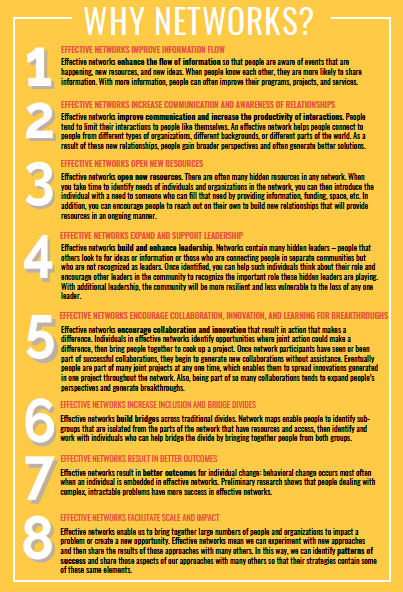
Many people are asked "Why networks?" or "When does it make sense to use a network approach?"
This handout explains all and makes it easy for you to email to someone with a response.
Why Networks? is newly added to our RESOURCES page… and it’s FREE!
To download, CLICK HERE.
Network-ing Does Not Equal Network WEAVING
Those of us who work with change networks could sometimes do a better job of clarifying the distinction between 'networking' and 'network weaving'. Leaving that distinction un-articulated and merely implied inclines those who are new to the discussion to default their hearing to the generic-mainstream meaning of 'networking'. It leaves much of what is important and different about network weaving either un-said, un-heard, mis-understood, or suspect.
Now don't get me wrong - generic 'networking' is indisputably important. Contrasting something to it doesn't mean devaluing it.
And in reality, there's a world of overlap. Either can merge into becoming the other. You could personally be doing one, in the context of the other. And what you think you're looking at depends on where you fit in the network. There isn’t a bright line. My pretense at precise distinction is merely for the sake of nudging us a little further along the spectrum of what's possible.
Because - there's more power and potential in a social network than we've been taught & have grown accustomed to recognizing. And it's hard to access that 'more', if our words limit our imagination. So this is as much about what we're IMAGINING we're doing while we're doing it, as it is about precisely WHAT we're doing.
For those of us who don't resonate to Harvey McKay's 'Swim With the Sharks' and that ilk - the default, mainstream meaning of 'networking' can be a big turn-off . We've come to understand it as a specific, often self-serving, not-necessarily-authentic, social butterflying kind of activity. To many of us 'networking' is a popularity contest - best left to smarmy salesmen, politicians, corporate CEOs & lobbyists. We get a little queasy just contemplating joining those ranks. And no amount of rosy pep-talk convinces us. For introverts and those who value authenticity ‘Networking’ fires up the wrong imaginings.
But beyond being a potential turn-off, the common usage of the word falls short of the vision and purpose behind network weaving. 'Networking' tells the social butterflies they've arrived (an assessment the rest of us can’t agree with), while it leaves much of a network's deeper potential impact and generativity untapped.
We need different words to signal that we're leaving the default meaning behind and talking about something more. And we have them, we just need to use them.
[ap_spacing spacing_height="20px"]A DIFFERENCE RECOGNIZED BY SOCIAL NETWORK SCIENTISTS
Social network scientists have some technical terms that can help us explore this distinction. Terms for different ways of focusing on, or 'scoping' a network for analysis. They are 'ego-networks', 'socio-networks', 'open-networks', and 'eco-networks'.*
I'll say more about 'ego-networks' and 'eco-networks' in a moment, but for the curious, I'll just say this about the other two:
A 'socio-network' is a 'network in a box'. It has clearly-defined, solid boundaries - such as “everyone who works at Company X”, “or everyone who goes to School A” - it only looks at the relationships existing within that boundary - no-one else is relevant.
An 'open-network' is what it sounds like - there are no boundaries. The internet is an open network. Twitter is an open network, Facebook is an open network - anyone can open an account and anyone can be connected to anyone. There is no limit to who might be included in a network map of an open network. In theory, it includes the entire human race (or even further).
*From Understanding Social Networks: Theories, concepts and findings by Charles Kadushin
[ap_spacing spacing_height="20px"]NETWORKING IS TO NETWORK WEAVING WHAT EGO-CENTRIC IS TO ECO-CENTRIC
For our discussion here, the more interesting technical terms are 'ego-network' and 'eco-network', which fit the distinction I'm trying to make almost perfectly. So let's dig in:
An Ego-Network revolves around a core person - it is defined by direct relationships to that central person and doesn't include indirect (2nd degree) relationships or persons unknown to the core person. Sounds a lot like what we get from 'networking', right? It's all about 'me'.
[ap_spacing spacing_height="15px"]What's an Ego-Network?
On a network map it looks like a hub with spokes. The relevant connections are to the single node at the center.
In our society, an ego network is generally connected around support of the core person in some way - important career contacts; the politicians a lobbyist cultivates; the network of family, friends and caregivers around someone with a severe illness, or something like the child support network I was gifted with as a young single mom, made up of sage advisors, friends who babysat regularly (or with whom I swapped regular babysitting) so I could work, friends who would drop everything to come get the kid if I had an emergency, and the kid's dad who gave me big chunks of time off. In that case, the connection to me (and the kid) was what was relevant - whether or not any of them knew one another didn't really matter. There was no larger purpose than helping me out or enjoying my kid.
This is the type of network that 'networking' tries to build and leverage. It is often based on direct reciprocity (I scratch your back, you scratch mine), is personally maintained (I work to maintain the relationship - stay in touch, send gifts, etc.), and often requires a direct match between my needs & yours - if there’s no direct match, there’s no relationship. (i.e. if you can’t help me raise my kid, I have far less reason to sustain our relationship, given my limited time and energy). And it's often homophilic ('like attracting to like') or relatively homogenous. My kid-network consisted entirely of older-moms, current-moms, wanna-be moms & one dad.
And because of their relative homogeneity, ego-Networks can easily become echo-chambers.
If the hub of an ego-network goes away the network falls apart. In an ego-network, the person is the purpose, and without that person, the connections are gone. My marriage (wonderful as it is), ended a lovely phase of networked connectedness in my life, because the purpose of our interactions (my need for help with child-raising) ended and the network drifted apart.
[ap_spacing spacing_height="15px"]Eco-Networks Fit Between Socio-networks & Open Networks
An Eco-Network is a relative newcomer to the network-science labelling game. I don't even know where I got the term from. It's not in the book I pulled the others from, which is what I'd expected. I know I've come across it in a few places over the course of my network reading but haven't been able to re-find them - so if anyone reading this can find them, please share with us!
In any case, an eco-network sits somewhere between a socio-network and an open-network. A socio-network (the 'network in a box') generally has a centrally defined, narrow purpose (think 'mission statement' or 'avoiding organizational bankruptcy'); a clear & precise definition of inclusion (think 'everyone on our payroll' or 'the roll-call list'); a relatively centralized & hierarchical command system; and officially-sanctioned & controlled information and resource flows (balanced by secret, un-sanctioned information flows). Whereas an open network is unbounded, random, directionless and incoherent (think Twitter, FaceBook, Instagram).
So we could think of an eco-network as skirting the boundary between rigid pseudo-control and a free-for-all. In my mind, an eco-network is the social equivalent of that strange attractor within a system that generates ordered patterns out of chaos. To me, an eco-network has the potential to generate a collective path from our current world - a world presently oscillating between destructive authoritarian rigidity and chaotic collapse - to a new world, built on an evolved understanding of order/structure, connection, and thriving.
[ap_spacing spacing_height="15px"]What IS an Eco-Network?
But what does all that MEAN, practically speaking?
Well, it helps to think about ecosystems. For one thing, both eco-networks and ecosystems only thrive with ample diversity.
For another - in both cases, flows of resources (whether money, information, skills, trust and shared inspiration or nutrients, shared environmental context, water and sunshine) are complexly reciprocal, as opposed to transactional. In a forest ecosystem, no-one barters with the squirrel to get it to poop out worm & fungi food. And in exchange for the squirrel poop, worms & fungi don't break the elements down fine enough so that plant roots can absorb them because because the trees or the pooping animals pay them to - they do it because that's what they do, it's part of their organic process. The trees & other plants only grow if there are adequate nutrients and water - and when they do, they create food some of the animals need to survive (and poop out), some of which become food for other animals, and it all requires water, water retention, healthy soil - and so on. There is an organically-driven flow of value, based on adequate diversity, that is not directly transactional.
There is no need for direct transactions because each community member's survival depends on the in-flows (food, etc.) and out-flows (poop, etc.) of all the members. Transactions are too small a dynamic to support the complexity and adaptivity of an ecosystem.
The ecosystem forms an interdependent network of a huge variety of life forms, moving a broad range of nutrients freely through a complex system of flows that sustains the whole thing. Pull out too many parts, or just block up too many of the flows from one component to another and the whole thing collapses. And when I say ‘flows’ here, I mean ‘connection’/’relationship’. You could have all the pieces of the system/network, but if they weren’t able to interact, you wouldn’t have a network, let alone a living system.
In an ecosystem, there is also no 'boss', no centralized command & control. The whole thing works because of how the community fits together, not because someone designed it that way. A social eco-network is similar. There may be players with larger impacts and greater input into direction, but that doesn't mean they master-mind and control the whole thing.
Another thing a social eco-network and a ecosystem have in common is boundaries. They may be fuzzy, but they are real and discernable. For instance, there is diversity, but the diversity isn't infinite (like it could be in an open network) and it certainly isn't random. Whales don't occupy forests, butterflies don't do arctics, polar bears don't co-exist well within rainforests.
With ecosystems the boundary is environmental, the community members all thrive within a similar environment. With an eco-network, the boundary is purpose. And the boundary is what holds the community together.
[ap_spacing spacing_height="15px"]The Point of an Eco-Network
So - ultimately - the main distinction between an ego-network and an eco-network is this - the eco-network exists to support a purpose, not a person or an organization. It supports a broad purpose that is greater than any of the individuals involved, but which benefits all the individuals involved. It's also a purpose which can't be served nearly as effectively by individuals (or individual organizations) acting on their own, without the diverse & reciprocal flows of support and information that characterizes an ecosystem.
The glue, then, is not ONLY strong personal bonds (as in an ego-network) - tho it won't ever work without a lot of them - it is ALSO an intention that is larger than the personal bonds. It is an intention to be one part of a larger, purposeful, whole. An intention to help develop that whole and the individuals within it in ways that are generative for oneself as well as for the larger purpose.
An eco-network, then, has: a purpose; diverse membership; complex reciprocity; multiple 'centers' with multiple roles; and a robust and free flow of information, resources, capacity and care to where they are needed most. A flow that both includes and transcends the bonds of personal connection, and that emerge from the interactions.
Far from being a popularity contest, an eco-network is a puzzle we can do together. It’s a fun but serious game of learning about fits and flows - about how to amplify the impact of what each member has to offer. It’s a dance between the individual and the collective, an ever-shifting experiment with order emerging from chaos.
[ap_spacing spacing_height="15px"]But So What?
Why do I think any of this matters?
I believe it matters because our imaginations matter. All of our actions and behaviors are driven by and reflect our deepest beliefs and values - and these are all gestated in the womb of our imaginations. What we can't imagine, we can't create. And the only way we ever create something new, for which there is no current model, is if we imagine it first. I believe it matters that we pull our imaginations a step past what we already know, do & envision - into a higher level of generative capacity - in a way that affirms and includes everyone, not just the social butterflies.
And I believe that if we tease out a clearer understanding of the values and intent of network weaving, if we tempt our imaginations into this fresh, promising new territory, we go further to affirm and generate the kind of world we want to live in together. We affirm that weaving an impactful and resilient change network:
Is not a contest - it's more about discerning the right network for ourselves (so we don't end up like a polar bear in a rainforest), finding our natural place, supporting the flow of nutrients where they need to go, expressing our unique contribution & helping others do all of that as well.
Means supporting others, whether they're able to support us or not, serves the overall purpose we’re all trying to promote.
Requires a lot of different roles, as well as understanding and appreciating the roles that are different from our own.
Means going beyond developing our own personal relationships, and helping others develop relationships that enhance maximum flow of value throughout the network.
Requires recognizing and acting on the recognition that there is a limit to how much can be accomplished in a transactional context, and that system change is built on an abundance of relationships across differences.
Stimulating this kind of understanding & imagination requires many tools & approaches - Mapping is the tool Tim & I personally contribute to the puzzle. Powerful, adaptive eco-networks are the shift we're trying to support.
What contributions are you interested in making & to which greater purpose? Please join the conversation in the comments section below.
Originally published March 26, 2018 at GreaterThanTheSum.com
Moving (rapidly) to a Network World
[ap_spacing spacing_height="10px"]I’m a network hunter. My idea of fun is to spend hours traveling through the web world, spying new networks and learning all I can about network development.
From my vantage point, the number of networks formed during the last decades has been extraordinary (though sadly no one is tracking this growth so we have no real research verifying the number of existing networks).
Virtually all of us are part of social networking sites, such as Facebook, Twitter and Instagram, and have access to virtual communication channels that open up huge opportunities for people to connect in novel ways.
[ap_spacing spacing_height="20px"]Networks are appearing in every aspect of life:
- Virtually all research is now done through networks of researchers and institutions
- Businesses are forming networks with customers and other businesses, and even organizing internally more as a network (zappos, etc).
- Service organizations are forming networks to streamline referral systems [ap_spacing spacing_height="15px"]
- 20% of married couples now meet on online dating networks
Then there is the particular set of networks that fascinate me (and hopefully you dear reader!). They are all about change. These networks range from those working on some sort of incremental change to those who see their network efforts as transformational, helping us co-create a world that is good for all of us.
[ap_spacing spacing_height="30px"]Types of Transformational Networks
There are many, many different change or transformational networks currently operating. Here are just a few examples:
[ap_spacing spacing_height="15px"]
Sector or Issue Networks
- Environment and sustainability: climate change networks, large landscape conservation networks, transition networks, electric car networks, reuse and upcycling networks, children and nature networks, community solar networks, Fire Learning Network, REAMP [ap_spacing spacing_height="20px"]
- Food: food access networks, local food networks, food policy networks, food hub networks, food business networks, organic food networks, healthy school lunch networks, school garden networks [ap_spacing spacing_height="20px"]
- New Economy: regional economy networks, makerspace networks, sustainable business networks, social capital networks, cooperative networks, networks to support local business, time banks and alternative currency networks,seed exchange networks, FabLabs Network, European Network of Living Labs (ENoLL), Sunday Soup networks[ap_spacing spacing_height="20px"]
- Housing networks: co-housing networks, end homelessness networks, intentional communities networks[ap_spacing spacing_height="20px"]
- Education: early childhood networks, childcare networks, education innovation networks, Flipped Learn Network[ap_spacing spacing_height="20px"]
- Health: health access networks, obesity prevention networks, Self-help networks, self-care networks, cancer-free economy network[ap_spacing spacing_height="20px"]
- Arts Networks[ap_spacing spacing_height="20px"]
- Criminal Justice Networks[ap_spacing spacing_height="20px"]
- Immigrant rights networks[ap_spacing spacing_height="20px"]
[ap_spacing spacing_height="15px"]Cross sector
- Women and Girls: ending violence against women networks, domestic violence networks, girls code networks, end trafficking networks, mom’s rising network[ap_spacing spacing_height="20px"]
- Leadership networks, network leadership networks, network consultants network, Movement NetLab[ap_spacing spacing_height="20px"]
- Gender Networks: LGBT Network,[ap_spacing spacing_height="20px"]
- Communications: open source networks, platform networks, peer to peer networks, community broadband networks, digital for good networks[ap_spacing spacing_height="20px"]
- New politics: new democracy networks, study group networks, community organizing networks,[ap_spacing spacing_height="20px"]
- Movement networks: Occupy Wall Street, Occupy Sandy, #MeToo, Immigrants Rights Movement[ap_spacing spacing_height="20px"]
- Geographic: neighborhood networks, regional environmental networks[ap_spacing spacing_height="20px"]
- Undoing racism and privilege: Racial justice networks, truth-telling networks, sustainable communities networks, ending white privilege networks [ap_spacing spacing_height="20px"]
- Specific cross sector networks: cross sector networks bringing together energy efficient housing groups with low-income housing groups[ap_spacing spacing_height="20px"]
- Advocacy networks: The Advocacy Network on Disabilities, Autistic Self-advocacy Network, Rocky Mountain Immigrant Advocacy Network (RMIAN), Prisoner Advocacy Network Domestic Employers Network[ap_spacing spacing_height="20px"]
- Governance & policy networks[ap_spacing spacing_height="20px"]
- Learning Networks/Communities of Practice: Healthcare breakthrough learning network,[ap_spacing spacing_height="20px"]
- Technology Networks[ap_spacing spacing_height="20px"]
- Philanthropy networks
Pretty amazing! I was surprised myself at the breadth of the networks out there.
I know I am missing a lot of other networks, especially non-U.S. and international ones. Please add others in the comments section below and I’ll add them to the list above.
[ap_spacing spacing_height="30px"]Networks are the way we act
But few of us (even me until recently) realized that we are rapidly moving to a place where networks are the primary way we see and act in the world. This wonderful video by RSA and Manuel explains this shift.
[ap_spacing spacing_height="30px"]Harold Jarche shows this shift in the diagram below:
In the next decade organizations will increasingly be part of external networks and, at the same time, will start to become more networked internally. I believe many nonprofits (and foundations!) will decrease their staff numbers because they are shifting their role to catalyzing and coordinating collaborative projects emerging from diverse networks. Foundations will have less staff because they are putting their dollars into pools of funds with decisions made for their distribution done through participative processes involving networks (more on that in a later post!) Former staff will become free agents and consultants, working as peers in the relevant networks, joining in many collaborative projects with many different partners.
[ap_spacing spacing_height="20px"]
Over half of the workforce will be free agents
By 2040, over half of the workforce will be free agents, and increasing numbers will be working in collaboratives rather than for employers. As a consultant, each year I am part of 6-12 collaborative projects, each with a different network, some short term and others multi-year commitments. I’m also part of around 3-6 unpaid collaborations: helping to develop an upcycling clothing production network in our community, working with others to develop modules for the network field, and helping to organize learning popups to deepen our understanding of topics such as self-organizing or network governance. I love my work and am never bored! (And I am almost never “too busy” or stressed out!)
However, the biggest shift is likely to be our increasing involvement in policy and governance networks. In the next decade, using participative co-design and decision-making platforms, more people will be participating in policy making and in co-creating new community institutions. Already some cities engage hundreds of people in designing public spaces, or conduct participative budget processes. Innovative political candidates are using videoconferencing and breakout rooms so that their constituents can co-design their platform.
We are just beginning to understand all the ramifications of these shifts, but it’s clear that we need to spend much more time learning about the possibilities that this shift will open for us.
I hope you will share your thoughts and networks in the comments section below.

